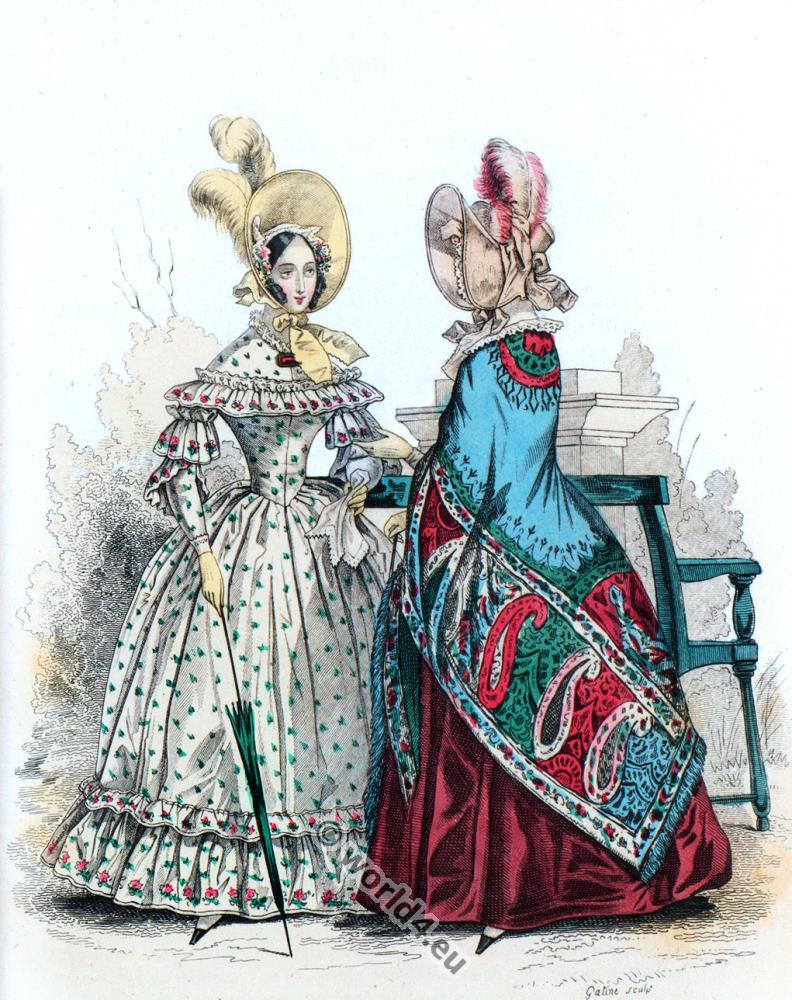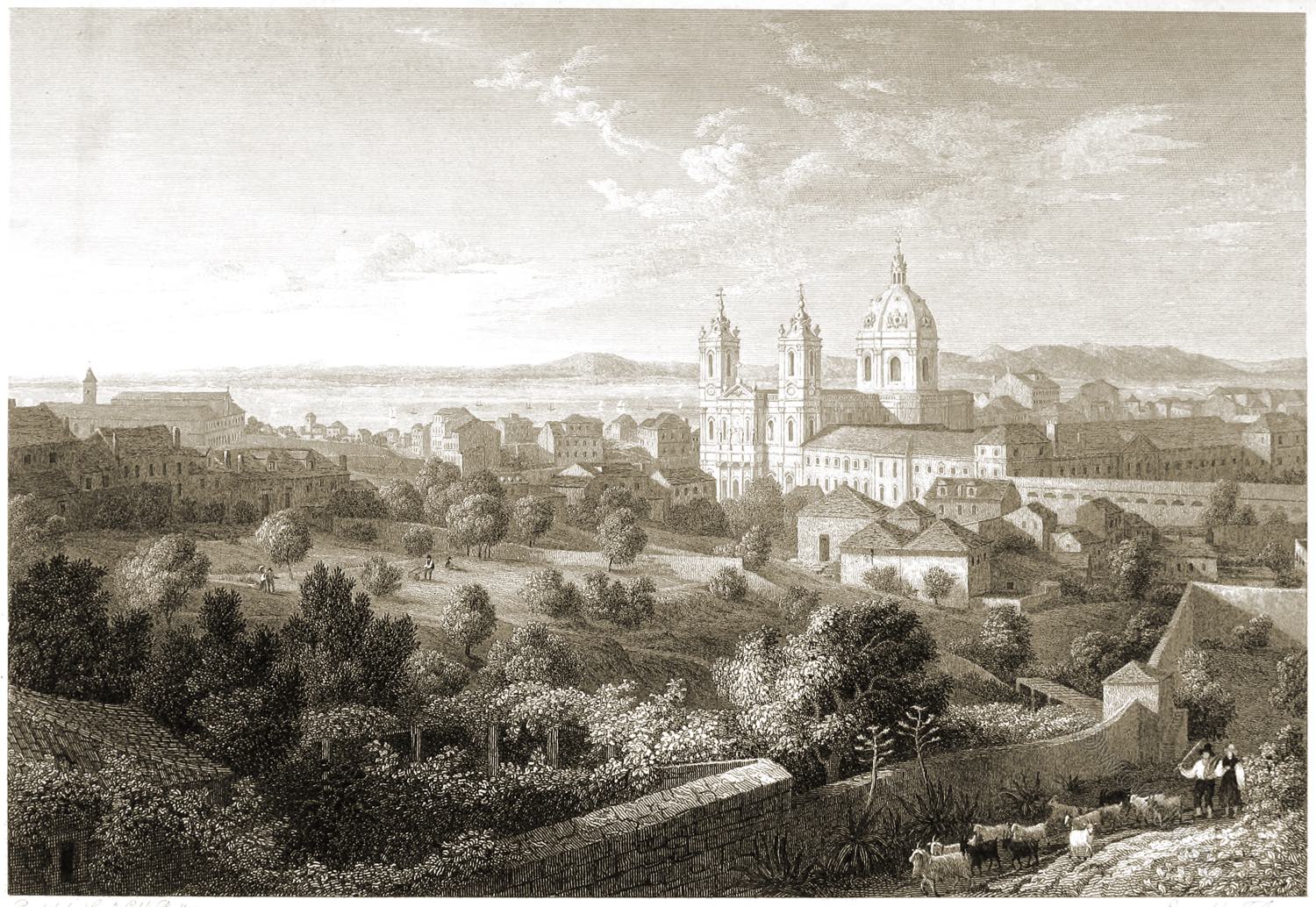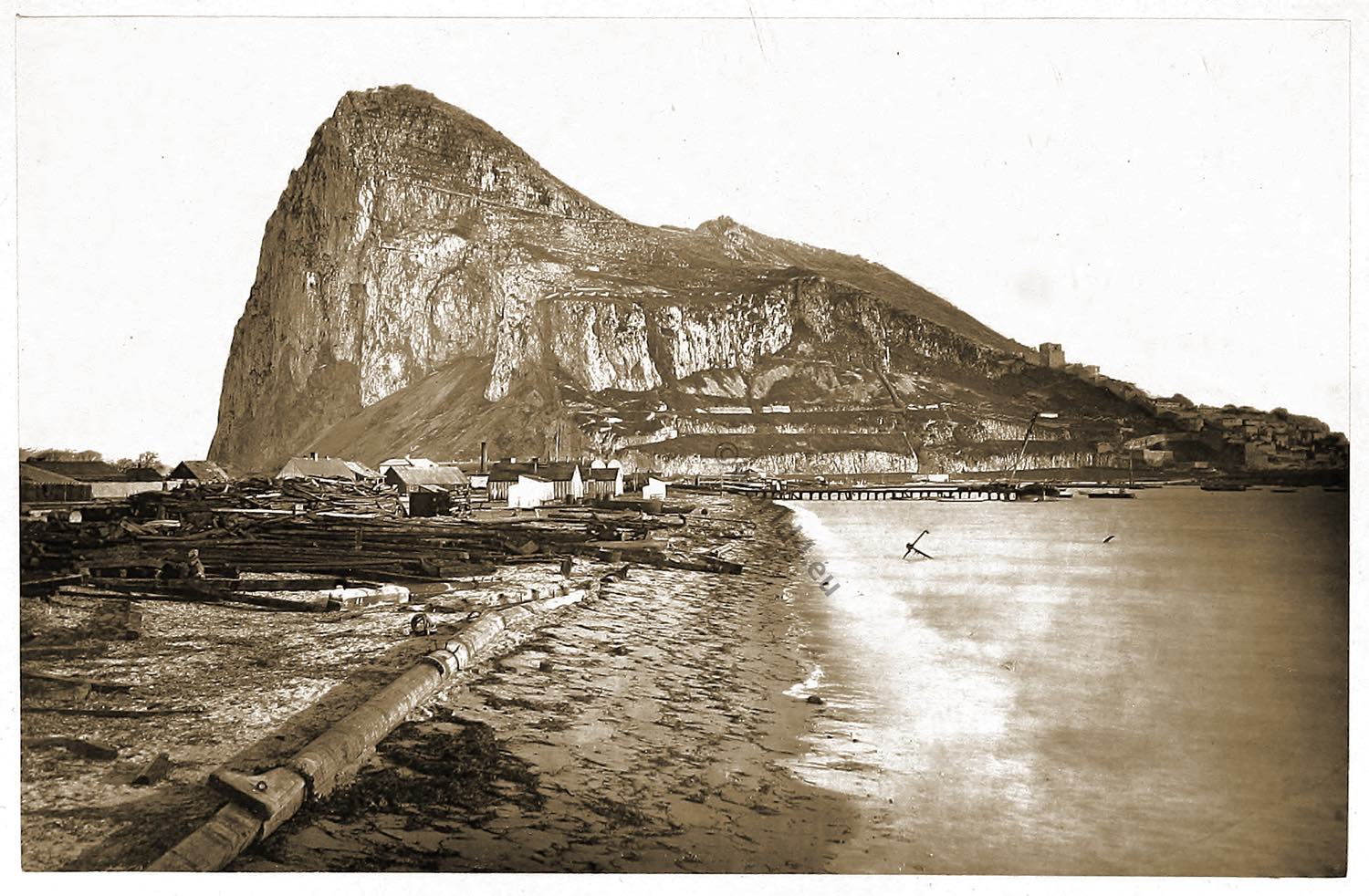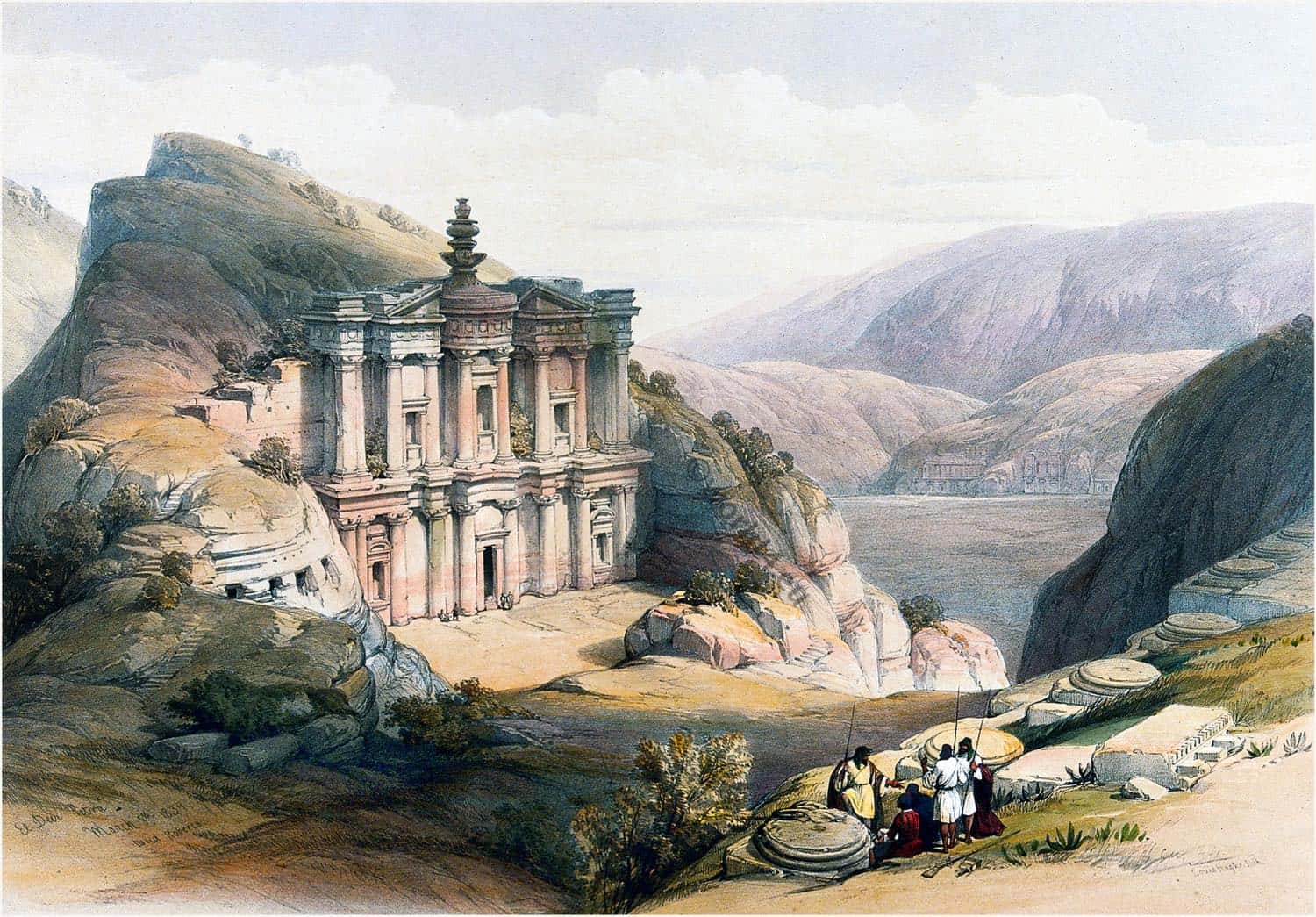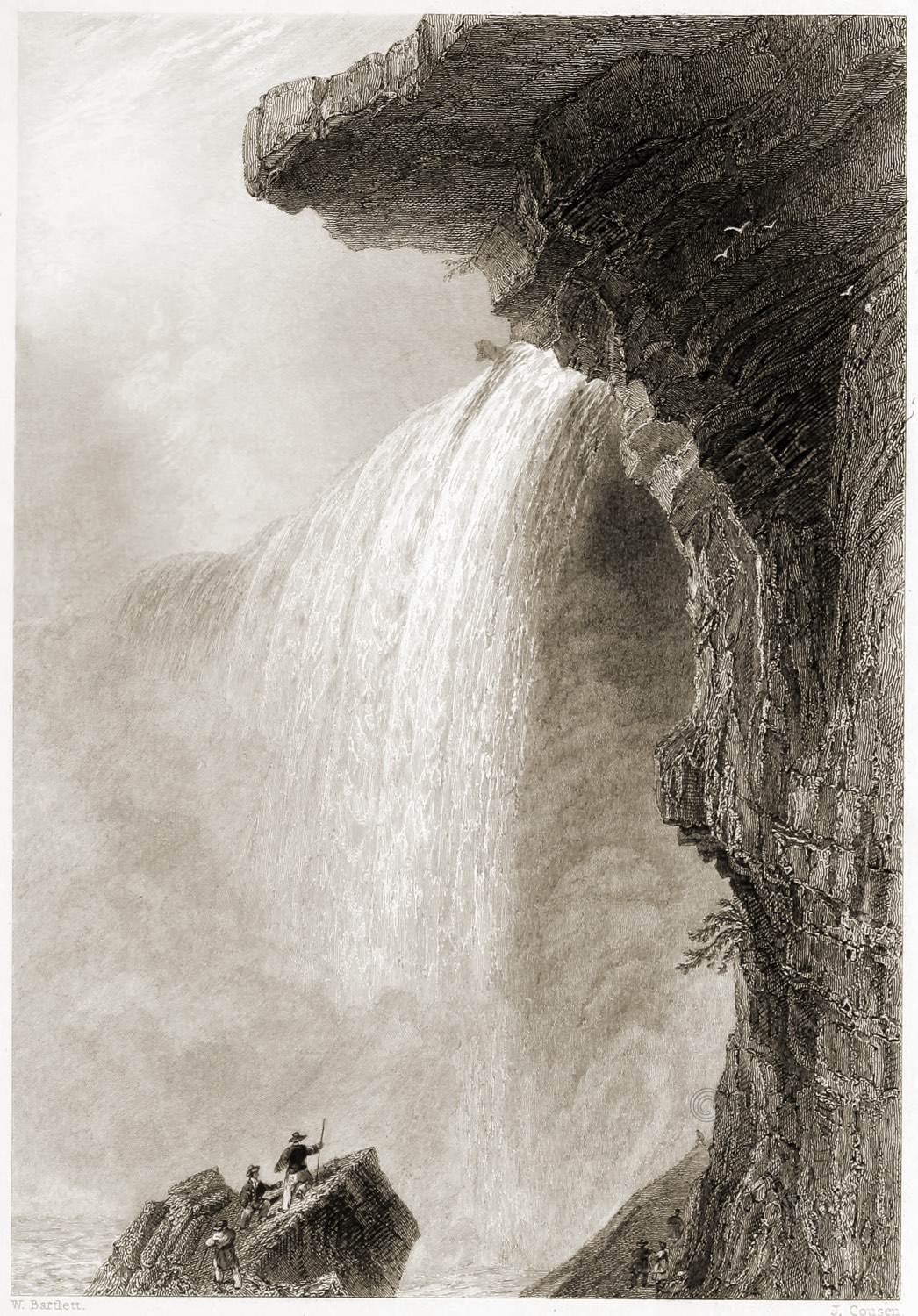
VIEW BELOW TABLE ROCK.
The interest of the view under this impending cliff is somewhat heightened by the probability that it will fall into the abyss sometime within the next six months Since the fall of the most projecting part of it, two or three winters since, a large and very deep crack has widened around the remaining area of the platform above, and it is thought that it will scarce survive the next frost. At present, spite of the threat, troops of ladies and gentlemen crowd its broad summit at all hours, walking, drawing, gazing, and philandering, in the fullest confidence that rocks have bases. And so it will go on, probably, till the “one (thunder) too many” hammers through its crack of doom.
The path leading behind the sheet of Horse Shoe Fall, runs close under the cliff of Table Rock; and between the spray and the small rivulets that trickle over the sharp edge, or find their way out of the numerous crevices on the face of the precipice, it is as wet as the lawn blessed with “perpetual rain” by the Witch of Atlas. We were of a considerable party that visited this Naiad’s palace hi the close of the last summer.
A small shanty stands at the head of the staircase, kept by a very civil Englishman, who, with the assistance of Ins daughter and two sons, keeps a reading-room and registry, vends curious walking-sticks out at Niagara, minerals, spars, and stuffed scorpions, besides officiating as guide under the Falls, and selling brandy and water to those who survive the expedition.

The ladies of the party were taken into a small apartment to change their dresses preparatory to their descent; and the two smart lads of our conductor soon metamorphosed their cavaliers into as brigand-looking a set of tatterdemalions as could be found in the Abruzzi. Rough duck trousers, long jackets of green painted cloth, oil-skin hats, and flannel shirts,—the whole turn-out very much like the clothes of the drowned exhibited for recognition at the Moague in Paris, constituted our habiliments. The difference of the female costume consisted in the substitution of a coarse petticoat for the trousers, and a string tied over the broad-brimmed hat; —and, flattery aside, our friends would have looked at home in Billingsgate. Quite the most formidable part of the expedition, to them, was passing in review before some twenty curious persons collected on the way.
The guide went before, and we followed close under the cliff. A cold clammy wind blew strong in our faces from the moment we left the shelter of the staircase; and a few steps brought us into a pelting, fine rain, that penetrated every opening of our dresses, and made our foothold very slippery and difficult. We were not yet near the sheet of water we were to walk through; but one or two of the party gave out and returned, declaring it was impossible to breathe; and the rest, imitating the guide, bent nearly double to keep the beating spray from their nostrils, and pusbed on, with enough to do to keep sight of his heels.
“We arrived near the difficult point of our progress; and in the midst of a confusion of blinding gusts, half deafened, and more than half drowned, the guide stopped to give us a hold of his skirts and a little counsel. All that could be heard amid the thunder of the cataract beside us was an injunction to push on when it got to the worst, as it was shorter to get beyond the sheet than to go back; and with this pleasant statement of our dilemma, we faced about with the longest breath we could draw, and encountered the enemy. It may be supposed that every person who has been dragged through the column of water which obstructs the entrance to the cavern behind this cataract, has a very tolerable idea of the pains of drowning. What is wanting in the density of the element is more than made up by the force of the contending winds, which rush into the mouth, eyes, and nostrils, as if flying from a water-fiend. The “courage of worse behind” alone persuades the gasping sufferer to take one desperate step more.
It is difficult enough to breathe within; but with a little self-control and management, the nostrils may be guarded from the watery particles in the atmosphere, and then an impression is made upon the mind by the extraordinary pavilion above and around, which never loses its vividness. The natural bend of the falling cataract, and the backward shelve of the precipice, form an immense area bike the interior of a tent, but so pervaded by discharges of mist and spray, that it is impossible to see far inward.
Outward the light struggles brokenly through the crystal wall of the cataract; and when the sun shines directly on its face, it is a scene of unimaginable glory. The footing is rather unsteadfast, a small shelf com- posed of loose and slippery stones; and the abyss below boils like—it is difficult to find a comparison. On the whole, this undertaking is rather pleasanter to remember than to achieve.
Source: American Scenery; or, Land, Lake, and River Illustrations of Transatlantic Nature. From Drawings by W. H. Bartlett. Engraved by R. Wallis, J. Cousen, Willmore, Brandard, Adlard, Richardson, &c. The Literary Department By N. P. Willis, Esq. London: George Virtue 26, Ivy Lane. 1840.

Continuing


